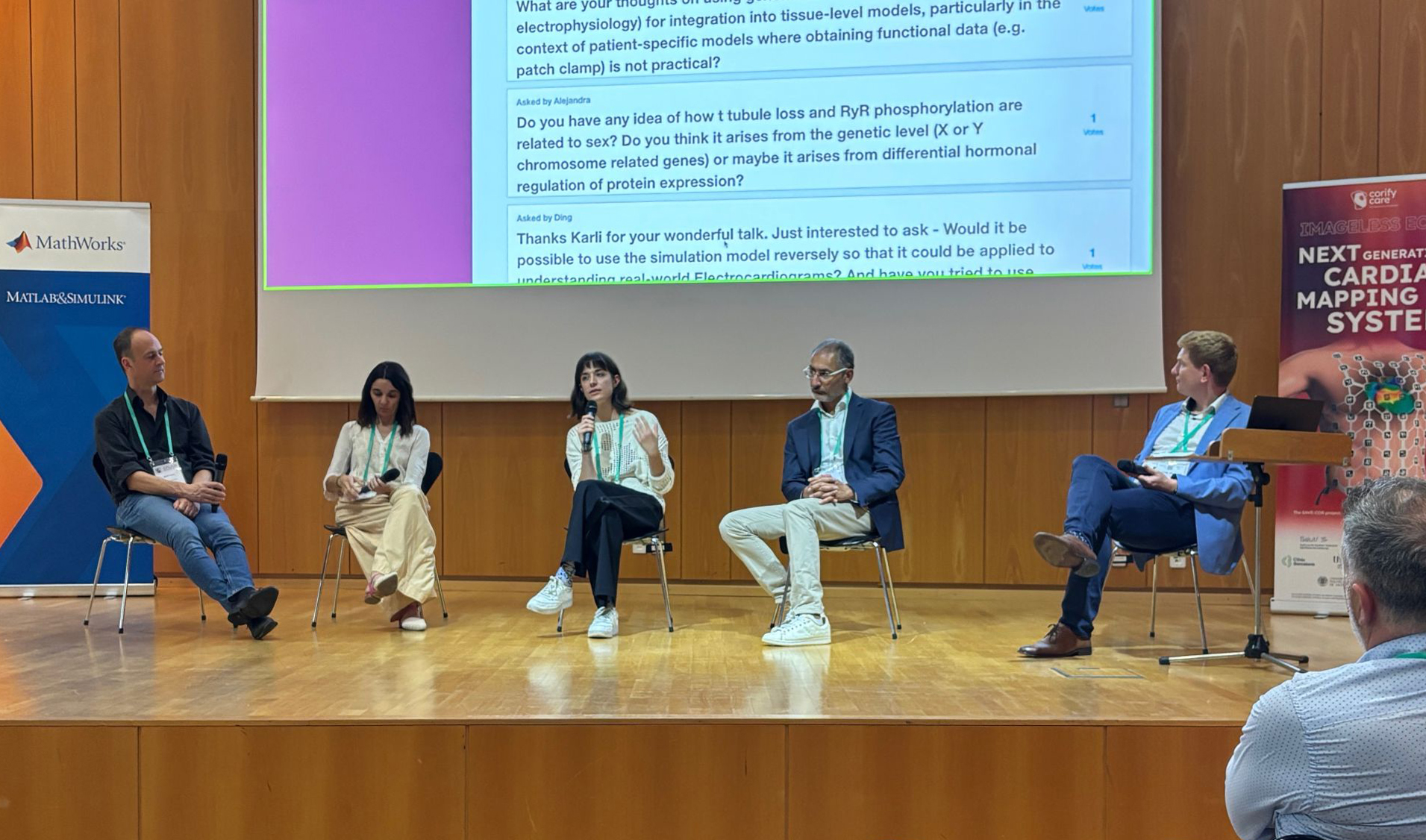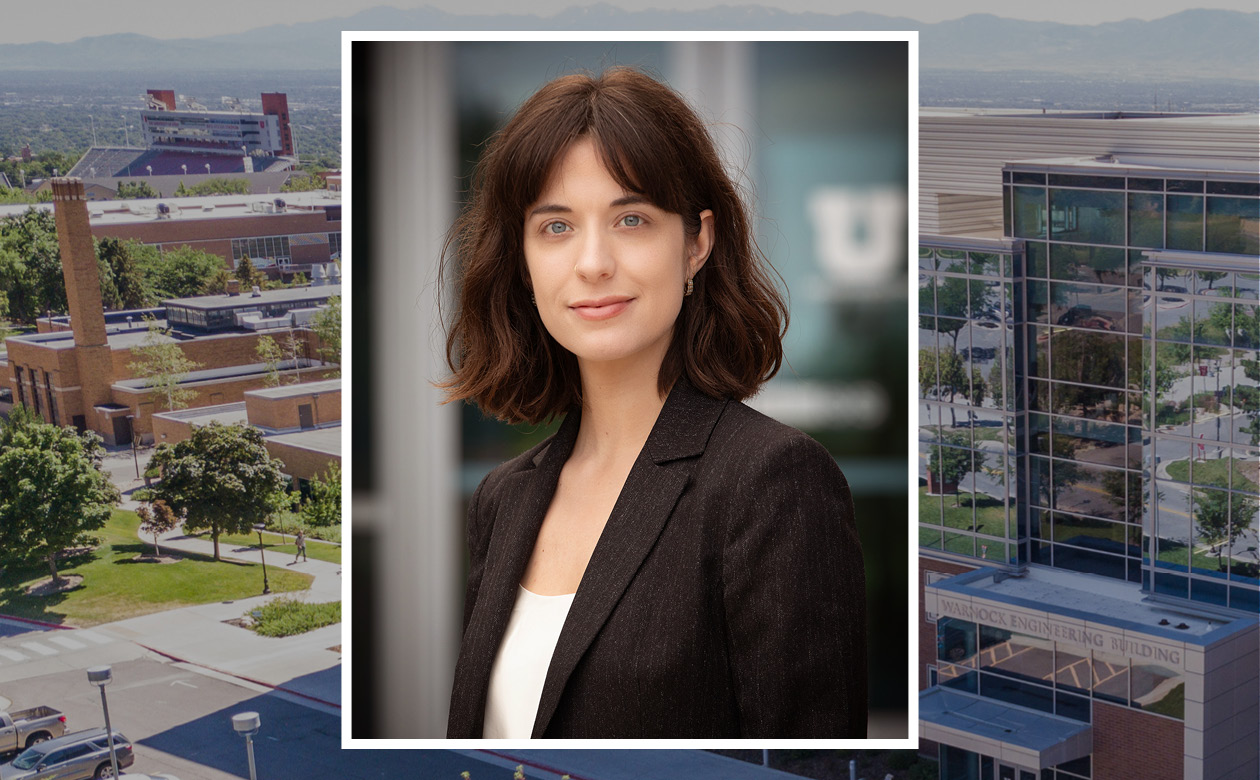After earning two of her three degrees at the University of Utah, native Salt Laker Karli Gillette returned in summer 2024 as an assistant professor in the Department of Biomedical Engineering and a member of the Scientific Computing and Imaging (SCI) Institute. Read how her personal experiences—including a mild heart condition diagnosis at age 16—led her to a career in computational cardiology and why, after eight years, she returned to SCI to make her mark in her field.
What’s your primary research area?
Cardiac arrhythmias are a type of cardiovascular disease where the normal electrical rhythm of the heart is not functioning properly. One common example is ventricular tachycardia, which can occur when a heart attack leaves a survivor with an irregular rhythm—part of the heart muscle is no longer electrically viable.
When somebody has a heart attack or an arrhythmia, what is the best treatment for this person? Generally, cardiologists use treatments that most patients will respond well to. However, when the treatment doesn’t work, it is hard to understand why, and cardiologists then need to try other treatments, which can be a daunting or expensive process.
We hope to improve this through personalized medicine using computer models—specifically, cardiac digital twins. My research focuses on generating computer models of how the heart functions electrically to better understand cardiac arrhythmias, and then potentially using the models for personalized medicine in individual patients within the clinic. It's about first understanding disease mechanisms. What is happening in the heart with this disease? Second, why aren’t specific patients responding to a specific treatment? And third, can we identify the ideal treatment plan, which may not necessarily be the ideal plan for someone else? These questions drive computational cardiology. Hopefully, we can eventually use these models in a clinical setting to provide better insights and personalized treatment planning, but the main limitation right now is personalization. How do I get data, put it into a model, and make this model actually behave like a patient to trust it enough in a clinical sense?

Above: Karli Gillette, center, speaks at the opening panel discussion for the Computing in Cardiology 2024 Conference held September 8–11 in Karlsruhe, Germany.
Why did you become a professor and researcher?
When I was 16, I was diagnosed with a heart condition—a very mild one that is luckily relatively benign. But for me, it was the first time that something went wrong with my body—the first time something wasn’t functioning the way it should. I wanted to understand what had happened to me. Around that same time, I had to decide what career path I wanted to pursue after high school. My amazing math teacher at Skyline High School, Adella Croft, suggested I do biomedical engineering. As my mom worked in healthcare at the University of Utah Hospital and my dad was an industrial engineer, I grew up with a bioengineering mentality without knowing it, and it seemed like a great fit. I enrolled at the U as a biomedical engineering major to pursue cardiovascular research. I set various goals for myself at the time that included getting a Ph.D. to study the heart, as well as moving abroad and learning a second language.
As a freshman, I immediately started in an experimental cardiovascular research lab. Through that experience, I learned that I have a strong preference for computation and not experimentation—certainly an important aspect of the field—and I left to pursue other more computational opportunities. In the next year, I added a math degree due to my love of mathematical modeling and signal processing. Throughout my studies, I bumbled through different research labs and topics, from composite panel testing to brain simulations to registration of images, but I didn’t seem to find a research or industrial direction I was truly passionate about and committed to. By the last year of my studies, I thought I'd take a year off after graduation and live in a van to climb, travel, and sort things out.
During that time, I met with Professor [and SCI co-founder] Rob MacLeod, who served as an undergraduate advisor in the biomedical engineering program. He naturally asked me what I was going to do after graduation. I told him I honestly didn’t know, but my plan was to live in a van to go climbing and see all the national parks in the U.S. So he asked what I would have liked to do. I essentially said, “Get a Ph.D., move abroad, and learn a second language. I’d prefer cardiovascular research.” These were the goals I had made for myself at 16 years old after my diagnosis. He suggested I work for him for a year. I said no—I didn’t need yet another lab or research project. But two weeks later, after looking into his research, I reached out and asked if he might still take me. He agreed.
After six months in his lab, we had another meeting. I told him yet again that I was going to live in a van, but admitted that I might want to become a professor as I had fallen in love with computational cardiology during my time in his group. He gave me a list of Ph.D. programs across the world in computational cardiology and told me to look through them. This would align all my goals—get a Ph.D., learn a language, and live abroad—while also putting me on a path to a faculty position. Looking through the list, I was most interested in Gernot Plank, a professor at the Medical University of Graz in Austria. Coincidentally, within a week or two, Professor Plank emailed Professor MacLeod and said he was looking for a Ph.D. student in biomedical engineering and applied mathematics. I agreed to join his group as a Ph.D. student, but needed to earn a master’s under Professor MacLeod before moving to Graz due to the way the European system works.
Over the last eight years in Austria through my Ph.D. and postdoc, I became specialized in my current research direction on the personalization of computer models of the heart, and I love my research even more than before. I still haven’t lived in a van, but I think my 16-year-old self would be proud, and I at least somewhat understand my own heart condition.
What was it like working with Professor MacLeod?
Professor MacLeod is an amazing mentor. I’m not sure he would take credit, but I wouldn't be here today and be the person I am if it wasn't for the opportunities he opened up for me. At the time when I met him, I just needed that little bit of support to push myself and take those steps in my career that I wouldn't have taken otherwise—and that is exactly what he gave me: the confidence and support to pursue my goals. He was hands-off, let me grow and learn on my own terms, and supported me along my way toward becoming independent and making realizations for myself. He has this way of guiding and making you just feel good about the fact you’re learning, even if you did things completely and absolutely wrong. I've learned so much from him about how to be a mentor. I am thrilled to be able to work together with him on overlapping interests now as an independent researcher where I continue to learn every day.
What does being a part of SCI mean to you?
SCI is where I got my collaborative nature. To model a heart, I need to collaborate with radiologists, cardiologists, experimentalists, and data-driven scientists—imaging and machine-learning researchers. This is why SCI is such an ideal home for me. It's one of the only places I've seen that truly bridges computation, application, visualization, and all these different research areas across a large campus. It creates this collaborative, cross-disciplinary environment where experts can interact and build off each other’s work to benefit research. That’s why I wanted to come back. SCI feels like home to me, and the perfect place where I can really grow, build my own research, and support the next generation within a collaborative environment.

